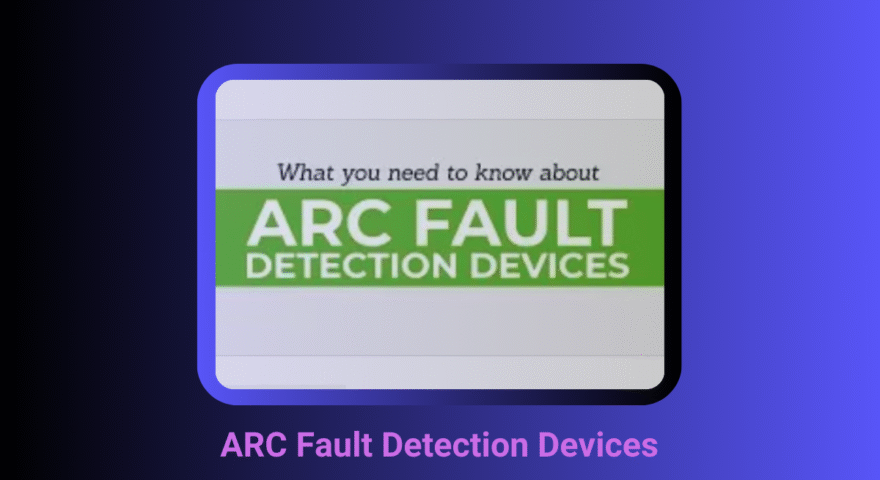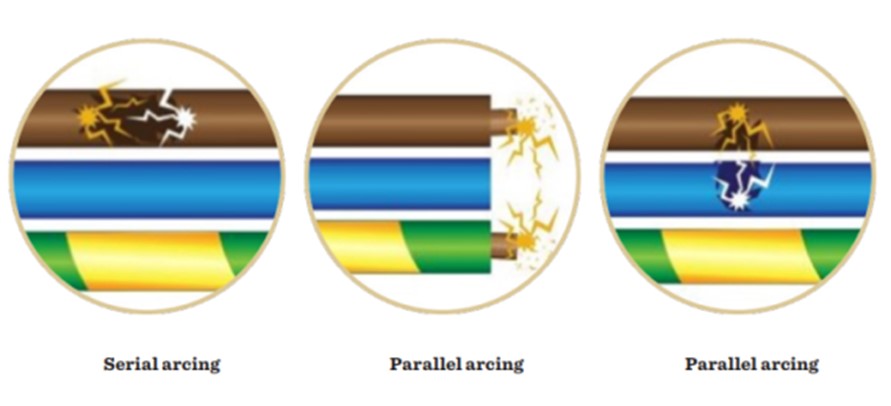ARC Fault Detection Devices


What is an arc fault?
An arc fault is a high-power discharge of electricity between two or more conductors. This discharge generates heat, which can break down the insulation of the wire and cause an electrical fire. Arc faults can vary in strength and duration, from low currents of a few amps, up to thousands of amps.
What problems can arise from an arc fault?
The most common causes of an arc fault are loose connections, poor terminations, old, weak and failing installations and damaged leads or cables. These faults can cause electrical fires, contributing to the 20,000 electrical fires every year in the UK. The flash from an arc fault can cause a number of related injuries, such as severe burns, hearing loss, eye injuries, respiratory injuries and blast injuries.

What is an Arc Fault Detection Device (AFDD)?
An AFDD is a single module device that detects arc faults, with the purpose of preventing fires and reducing danger (defined by The Wiring Regulations as ‘Risk of injury to persons from: fire, electric shock, burns, arcing and explosion arising from the use of electrical energy’). The devices are larger than a standard circuit breaker and will require a larger consumer unit to accommodate them. A separate device is required for each socket serving electrical circuit of a building. This could be as little as 5-10 for a domestic house, up to 100s or 1000s in a larger building like a hotel, school, hospital etc.
What does an AFDD do?
An AFDD uses microprocessor technology to analyse the electricity’s waveform to detect any unusual signatures that signify an arc on the circuit. Cutting off power to the affected circuit could prevent a fire. They are far more sensitive to arcs than conventional circuit protective devices like RCDs and MCBs in detecting thermal changes, variations in efficiency and dips in power.
Where/when would we install an AFDD?
UK Wiring Regulation 421.1.7 states: Arc Fault Detection Devices (AFDD) conforming to BS EN 62606 shall be provided for single-phase AC final circuits supplying socket outlets with a rated current not exceeding 32A in: Higher Risk Residential Buildings (HRRB), House in Multiple Occupation (HMO), Purpose-built student accommodation and Care homes. Currently, these are the only four building types with a requirement to install AFDDs. The lack of regulatory clarity arises from the specific wording used in The Wiring Regulations. According to Electrical Safety First-Best Practice Guide (issue 6). Shall implies a requirement (‘expression in the content of a document conveying criteria to be fulfilled if compliance with the document is to be claimed and from which no deviation is permitted’), whereas Should implies a recommendation (‘expression in the content of a document conveying that among several possibilities one is recommended as particularly suitable, without mentioning or excluding others).
The NICEIC have taken the stance that where consumer units and distribution boards are being replaced, the customer is advised of the benefits of installing AFDDs. Provided alterations or additions have yet to be included, there is no regulatory requirement for them to be included. It is assumed that this only applies to high-risk environments (mentioned above) where AFDDs are mandated.
The grey area of should over shall is open to interpretation and means that, although the installation of AFDDs is recommended in all building types (not just the four mentioned above), contractors can choose not to install them, referencing the fact that The Wiring Regulations do not directly state AFDDs are a requirement.

As a business, BSE|FM always promote the installation of AFDDs in line with our best practice’ approach to our maintenance and contracting clients.
Talk to Our Expert Team
If you would like to learn more about the range of services we offer, please get in touch for an informal discussion about your needs and requirements.















